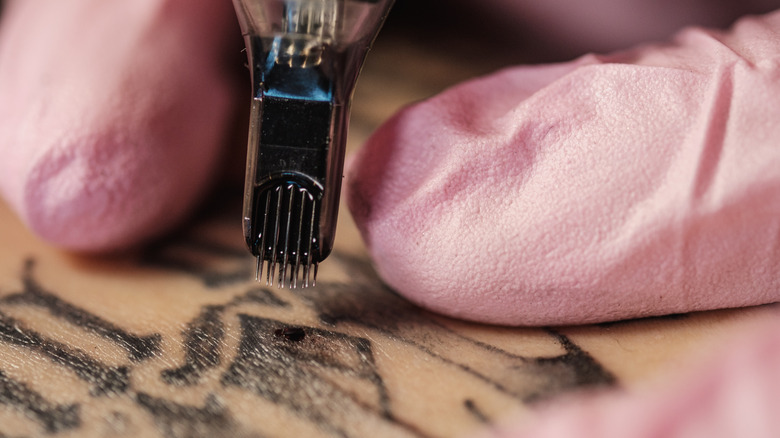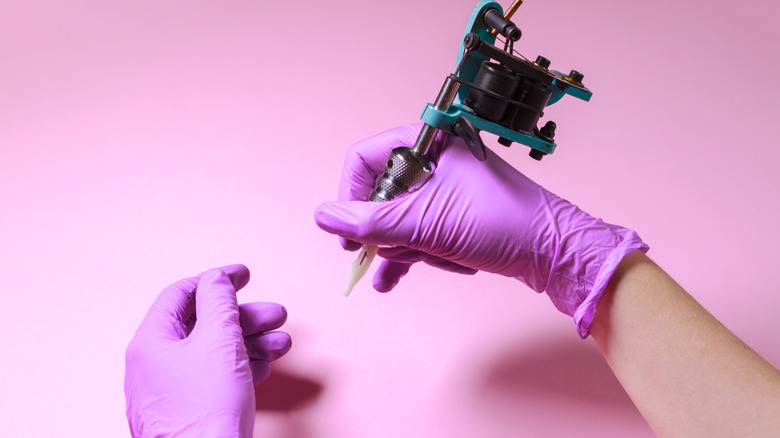The Best Way To Treat An Infected Tattoo
Tattoos are a great way to express yourself and showcase your individuality. As tattoos become more commonplace and accepted in the United States, more and more people are taking the leap and getting inked — but that doesn't mean that tattoos come without any risks. Despite their growing popularity, tattoos still run the risk of getting infected. While it's normal to experience some redness, itchiness, and irritation after getting some new ink, an infected tattoo is an entirely different story.
Most tattoos will begin to heal after the first few days, but infected tattoos will get progressively worse over time. If your tattoo is infected, you may experience fever, rash, swelling, chills, sweating, pus drainage, red streaking and lesions, areas of raised tissue, and worsening pain (via Healthline). Tattoo infections can occur if your tattoo artist uses unsterilized equipment or contaminated ink. They can also be the result of poor hygiene and improper aftercare.
Types of tattoo infections
There are a few different types of bacterial infections that you can contract after getting a new tattoo. The most common tattoo-related infection is called a staph infection (via Insider). Caused by staphylococcus bacteria, staph infections usually respond to oral antibiotics and can be treated within a week or two. That's not always the case, however. Some staph infections, like methicillin-resistant staphylococcus aureus (MRSA), are resistant to several common types of antibiotics.
Luckily, there are some lesser known oral antibiotics, like sulfamethoxazole, that can be used to treat MRSA within one to two weeks. Another type of tattoo infection is known as an atypical mycobacterial infection. A result of contaminated ink, atypical mycobacterial infections are caused by mycobacterium chelonae bacteria and are much more difficult to treat (via Medical News Today). You may need to take antibiotics for months in order for the infection to fully clear up (via Healthline). In rare cases of infection, surgery may even be required. In addition to oral antibiotics, your doctor may also recommend other treatment methods, including pain relievers, topical creams, and antihistamines.


